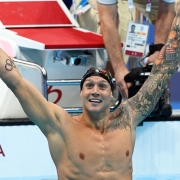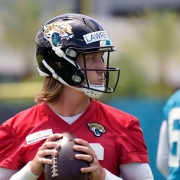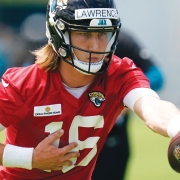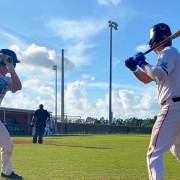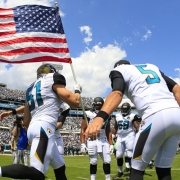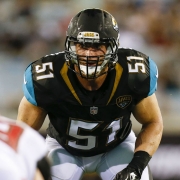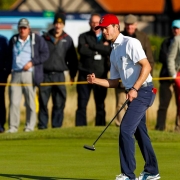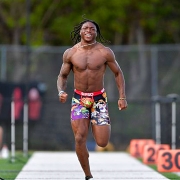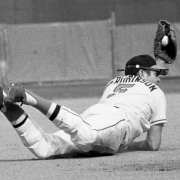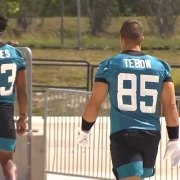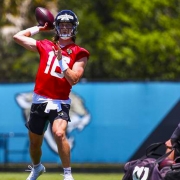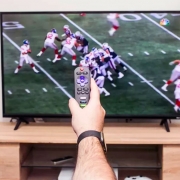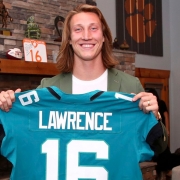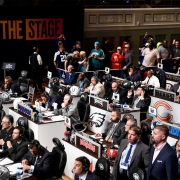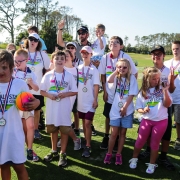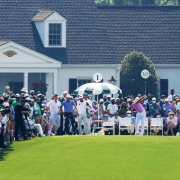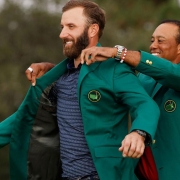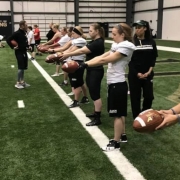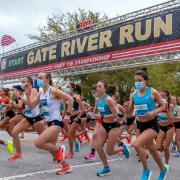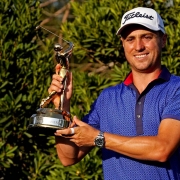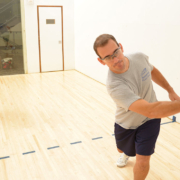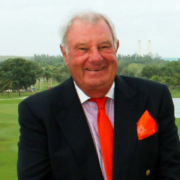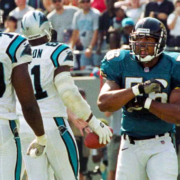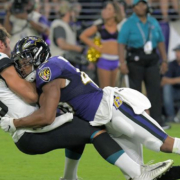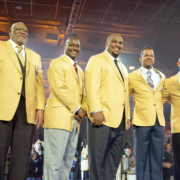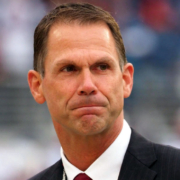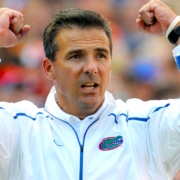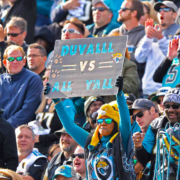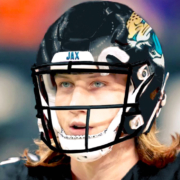Jaguars Problem Can Be Fixed
It’s easy to see what kind of team is taking the field in professional sports just by walking into their locker room.
Professional players are just that; professionals, mercenaries that are wearing a certain team’s colors for money and their livelihood. Some got there through the draft, some came as free agents or made the team on hustle and heart. So, what differentiates winning mercenaries from teams that are going through the motions?
Culture.
A former first round pick in the NFL draft, Eric Curry once pointed that out to me in a winning Jaguars locker room shortly after his arrival.
“Oh, you can tell this team wants to win,” he said when I asked what the difference was between the Jaguars and his other NFL experience.
“That’s not normal?” I asked.
“No, no,” he added, shaking his head. “Most guys are there for the money and you can tell. This team is different.”
Curry was describing the winning culture in the Jaguars locker room in the late ‘90’s. It’s called a lot of different things, playing for each other, rally together, whatever.
Although the league hasn’t allowed reporters in the locker room for two years now citing Covid, an NFL locker room housing a winning team has a vibe like none other. No telling what the Jaguars locker room is like, but the contrast between the two is dramatic.
In a winning locker room there’s chatter, guys walking around, there’s music playing, a ping-pong game happening, with other players watching (and betting) on the outcome.
A losing locker room has an eerie quiet, individual guys working, then dressing and leaving. Their social life is elsewhere, their free time is spent away from that losing environment.
In 2017, the Jaguars locker room was vibrant, energizing, and full of a desire to play well.
For the team.
Where does that come from?
It’s a culture that’s created by players who know how it gets done at the highest level. The Jaguars had Calais Campbell, Marcedes Lewis and Paul Posluszny on that team. None of those three are “rah rah” guys, but because of their professionalism, how they come to work every day ready to compete, they set the tone for everybody else.
“You really have to start over every year,” then Head Coach Doug Marrone said after their Jaguars were beaten in New England in the AFC Championship game. “You have to build it up from the ground again.”
He was exactly right, except he should have added that the foundation was there to continue a “sustainable winner” as so many franchises have in the NFL
And that’s where the Jaguars faltered.
They’ve done it continually in their twenty-seven-year history, winning games or seasons here and there but never building on their success. After 2017, Posluszny retired, Lewis was allowed to leave as a free agent and Campbell was eventually traded to Baltimore.
Culture, gone.
I suppose they were expecting Jalen Ramsey, Yannick Ngakoue and Myles Jack to pick up the slack. But that’s a totally mis-read of the team. Blame it on General Manager Dave Caldwell if you like, but eventually, Shad and Tony Khan are signing off on these moves and have to be culpable when it comes to losing.
Why do teams like Pittsburgh, Baltimore, New England, and others yearly compete for playoff spots?
Culture.
If a player takes a step back in his production on the field, he’s still part of the culture there and they keep him to build on it. There’s an expectation level that’s carried from one generation of player to the next. The Jaguars have never done that. They always trade or let a player go a year too early rather than a year too late.
Since Khan bought the team in 2012, he’s the thread that runs through the organization. He’s signing off on the moves they’re making and he hasn’t seemed to grasp the difference between building that winner in pro sports and in business.
In business, changing managers or leadership doesn’t change the culture of your organization. That’s coming from the top, from ownership and their direct involvement. In pro sports, that culture tone might be set by the leadership, but it’s built from the players up. You can’t install a culture on a team, they have to build it.
Which is why the Urban Meyer hire was all wrong.
Meyer’s success at the collegiate level was built on a culture of “me.” It’s about him, it starts with him, and it only ends with him when they’re winning. Which he did a lot in college. And when it wasn’t working, he cut and run.
This Jaguars team coming off a 1-15 season needed a rebuild and had the draft picks and free-agent money to do it. They just needed the right architect to start the job. Khan picked Meyer, based on his success in college and the sales job Meyer did on him. Perhaps blinded by his success, Khan didn’t ask enough questions of the people around Meyer about his failures.
It’s obvious Meyer has a problem with other adults. He’s fine when everybody is subservient to him. When the players are young and impressionable, when the staff is relying on his recommendation for jobs in the future and when the roster has a hundred players, all close in talent and all available at any time.
In the pro game, as Jimmy Johnson noted, it’s a galaxy of difference.
Players are adults, the staff has a wealth of experience in both winning and losing, fans can sense when their team is on the path to winning and the media asks real questions about what you’re doing. Meyer doesn’t want to deal with any of that.
Reports this week of an at-practice argument between Meyer and Marvin Jones are not surprising. Jones is a veteran who has seen winning and losing in his career and didn’t like how Meyer was criticizing the wide receiver corps in public.
I’m sure Meyer was shocked that a player would question him. “I’m smart and you’re stupid,” is his usual thought process. And that he would engage in an argument on the field isn’t how you lead.
The “I’m a winner, you’re losers” meeting with the assistants is right on target with Meyer’s lack of credibility among Jaguars players and staff. He might as well have had a couple of steel balls in his hand, rotating them as he made his accusations. (Some of you might get that. See “The Caine Mutiny.”)
Khan will have a decision to make as the season winds down. If he keeps Meyer, there will be a mass exodus on his staff. He doesn’t have the connections in the NFL to replace coaches with experience in the league, so he’ll have to go to the college coaching ranks. Meyer has no credibility in his own locker room, so the players banding together with Meyer as the common ‘enemy’ if you will, could build the culture they need. And if GM Trent Baalke sticks around, which is doubtful, finding players will still be his challenge. Trevor Lawrence and Josh Allen are his best, legitimate players. He needs four or five more like them to build a winner.
Could be tough sledding for a while.

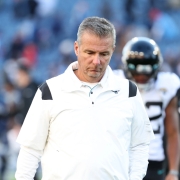

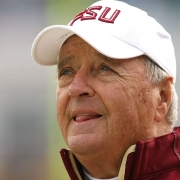
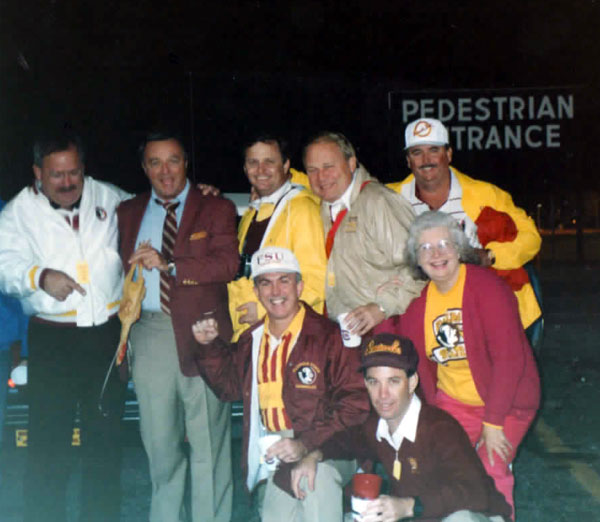 “One guy had a rubber chicken, and we were all getting ready to take a picture with the chicken. A highway patrolwoman stopped and wanted to know what was going on. That’s when Bobby jumps out of one of the patrol cars and comes running over and says; You guys from Jacksonville have all the fun.’ And asked to get in the picture. He was such a fun and humble person. He had integrity and character. He changed people’s lives just by living the way he did.”
“One guy had a rubber chicken, and we were all getting ready to take a picture with the chicken. A highway patrolwoman stopped and wanted to know what was going on. That’s when Bobby jumps out of one of the patrol cars and comes running over and says; You guys from Jacksonville have all the fun.’ And asked to get in the picture. He was such a fun and humble person. He had integrity and character. He changed people’s lives just by living the way he did.”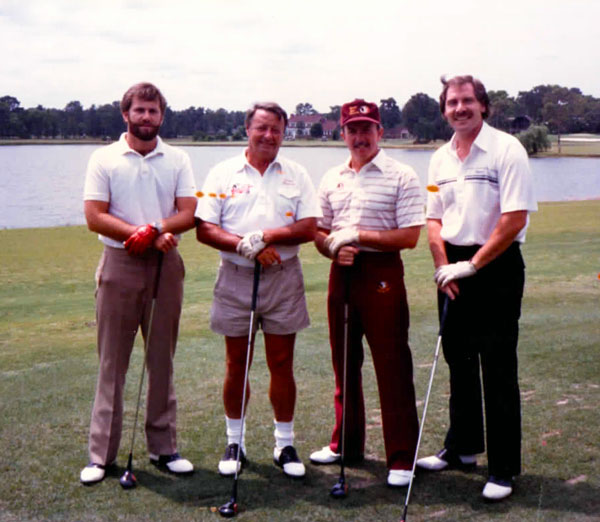 We once played golf at Deerwood during his annual spring tour in the late ‘80’s. We rode in the same cart and over the course of five hours together, we talked a lot about football, my short college football career, family, and faith and discovered we were fraternity brothers. We hit some good and some bad shots over eighteen holes as usual.
We once played golf at Deerwood during his annual spring tour in the late ‘80’s. We rode in the same cart and over the course of five hours together, we talked a lot about football, my short college football career, family, and faith and discovered we were fraternity brothers. We hit some good and some bad shots over eighteen holes as usual.